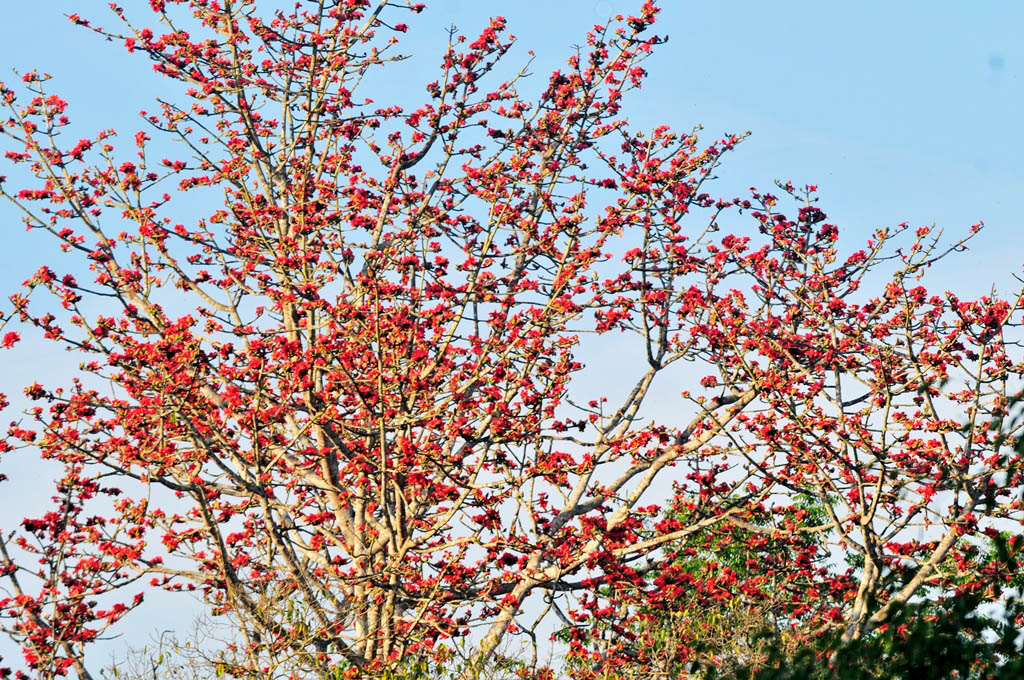In early spring, the Tropical Brilliant Flowers Garden within XTBG is extremely attractive and beautiful for the flame-red blossoms of the kapok trees.
Towering over other plants, the kapok trees in full bloom look like fire dyeing the garden, surrounding the Luosuo River.



The kapok tree, Ceiba pentandra, is a large, deciduous, tropical tree that is native to tropical America, Africa, and the East Indies. It is an emergent tree of the tropical rainforests,and is often described as majestic.
Links: http://www.rainforest-alliance.org/resources.cfm?id=kapok_tree
Kapok Tree (Ceiba pentandra)
Botany
A giant in the rainforests, the kapok tree can reach up to 200 feet in height, sometimes growing as much as 13 feet per year. Due to its extreme height, the kapok, or ceiba tree, towers over the other rainforest vegetation. The trunk can expand to nine or 10 feet in diameter. In the nooks and grooves of this huge plant live a diverse number of species including frogs, birds and bromeliads. The kapok tree is deciduous, shedding all of its leaves during the dry season. As its seeds are easily blown into open areas, kapok trees are some of the first to colonize open areas in the forest. The white and pink flowers of the kapok tree emit a foul odor that attracts bats. As the flying mammals move from flower to flower feasting on the nectar, they transfer pollen on their fur, thus facilitating pollination. The kapok tree does a great job at spreading its seeds, producing anywhere between 500 and 4,000 fruits at one time, with each fruit containing 200 seeds. When these fruit burst open, silky fibers spread the many seeds all over the forest.
Habitat
The kapok tree is found throughout the Neotropics, from southern Mexico to the southern Amazon and even to parts of West Africa. Because the unopened fruit won't sink when submerged in water, many believe the fruit of the kapok tree floated its way from Latin America to Africa.
Significance to Humans
The majestic kapok tree has many uses for humans. Its wood is lightweight and porous; good for making carvings, coffins and dugout canoes. The silky fibers that disperse the seeds are too small for weaving but make great stuffing for bedding and life preservers. Soaps can be made from the oils in the seeds. Other parts of the giant tree are used as medicines.



